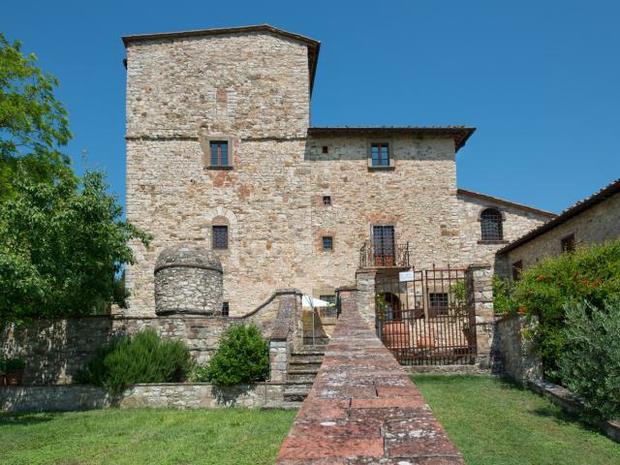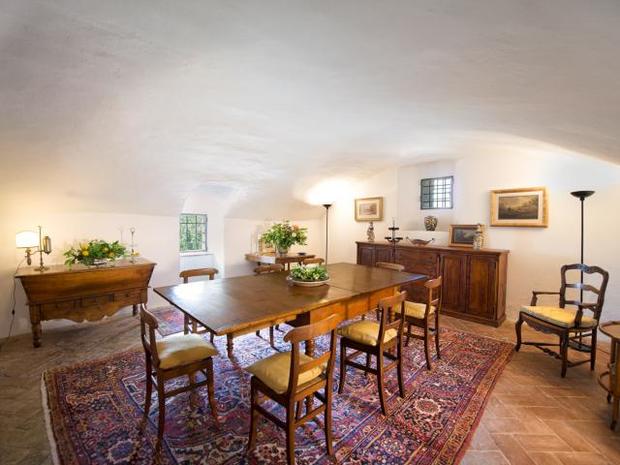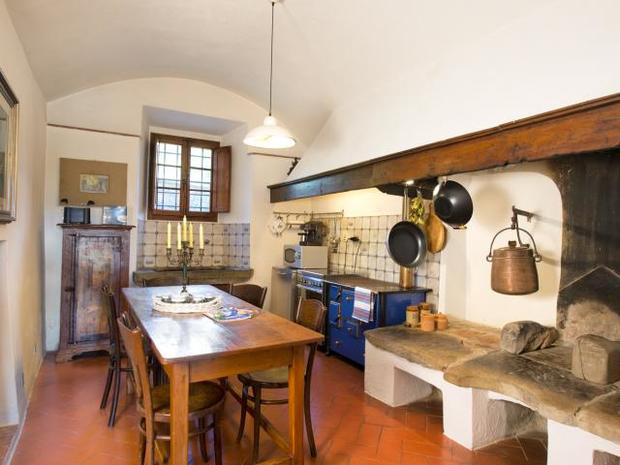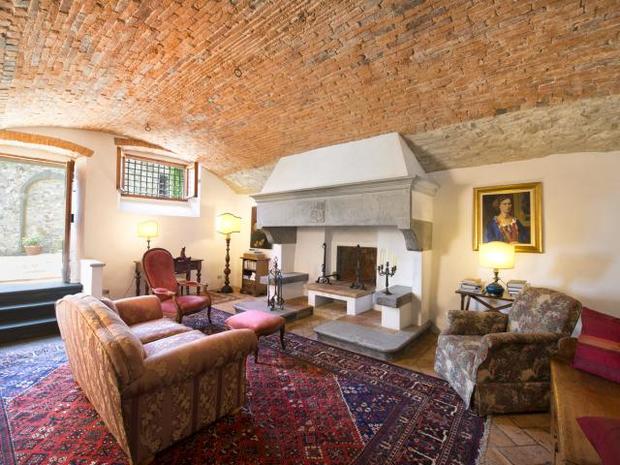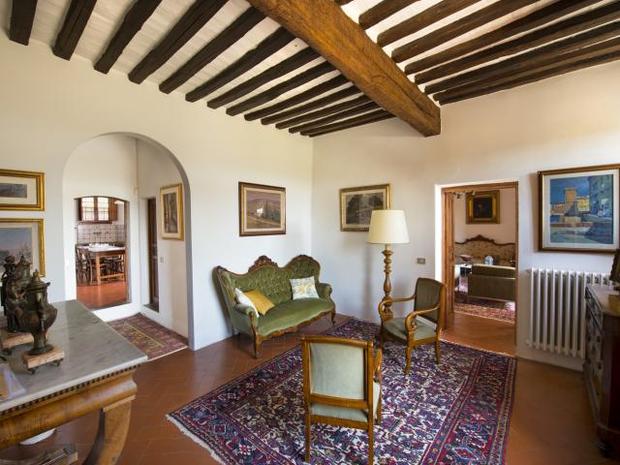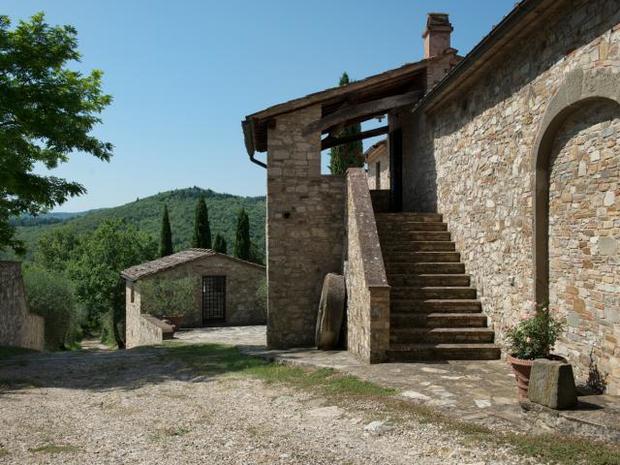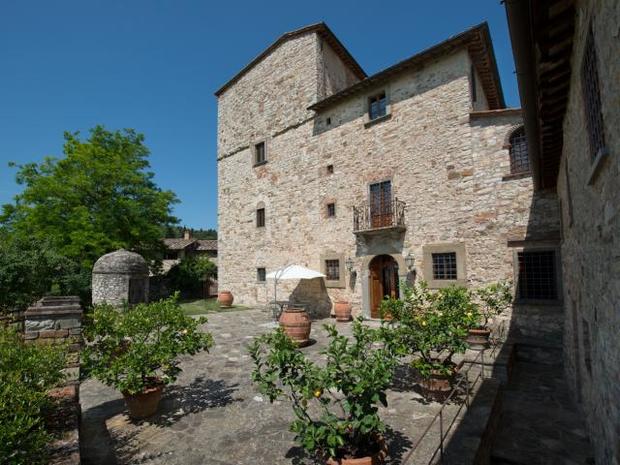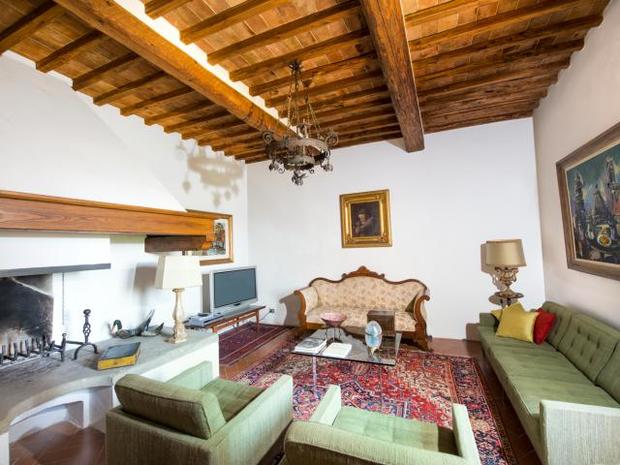Want to live like a Renaissance master? A Michelangelo villa is for sale
Listen up, art history buffs: A Tuscan villa that once belonged to Renaissance master Michelangelo Buonarroti is up for grabs.
The 12,916-square-foot home is located on six acres of farmland and is listed for sale for just over $8 million.
But don't expect to sleep in the same bedroom where Michelangelo once slept, said William E. Wallace, the Barbara Murphy Bryant Distinguished Professor of Art History at Washington University in Saint Louis, who has written seven books on the life and works of the great artist.
Michelangelo moved from Florence to Rome in 1534 and never returned, Wallace said. He purchased this property in 1549 and died 15 years later in 1564 at the age of 88.
"This is one of a number of farm properties he owned," Wallace said. "He had at least a dozen of all different sizes. Some were fairly large farms (like this one) -- he had two or three others of that size -- and others were smaller properties closer to Florence."
While the surrounding olive groves, lemon orchards and Chianti vineyards might give the eight-bedroom, seven-bathroom home a sense of isolated privacy, it's only about a 15- to 20-minute trip to the city center of Florence, said Annie Madren Young, international real estate specialist for Handsome Properties International.
The current owners spent 10 years restoring it. While it has many updated modern features like central heating, an Internet connection and high-end kitchen appliances, some historical features remain intact, including the massive original kitchen fireplace, curved brick ceilings and 70 percent of the original Renaissance-era terra-cotta floors.
Even if Michelangelo didn't actually live in the house, the new buyer will still get a piece of his history. A copy of Michelangelo's original deed for the property, which refers to him as a "dear sculptor and Florentine citizen," comes with the home and is signed by the artist himself.
Click ahead to learn more about the property and Michelangelo's mark on it.
Michelangelo bought the home as an investment
Pictured: The main house
Michelangelo bought his Tuscan farm properties to secure his family's financial future, Wallace said.
"Very few people realize how close he was to his family and how important his making art was to ensure the financial stability of his family," he said. "Building Saint Peter's (Basilica) was to save his soul, but everything else he did was to ensure his family would live in a noble fashion."
The farm properties provided a source of income for Michelangelo's family after his death.
The operation of the farm
Pictured: A dining room with arched ceilings
In what was a common arrangement at the time, a farmer would have lived on the property and overseen its day-to-day activities, Wallace said. The farmer would get to keep half of what the farm produced. The other half would go to Michelangelo and his family.
The 300 remaining pages of Michelangelo's personal records include weekly letters to and from his nephew, Leonardo, who managed the family's properties, which show Michelangelo's deep involvement in the farms' operations, Wallace said. Michelangelo also kept extensive records of his farms' operating costs and production and was actively involved in their operations.
Long history, short list of owners
Pictured: One of the home's eight bedrooms
Over its long history, the property has changed hands only a few times, Madren Young said. The tower section of the main home dates back to about 1047, and the rest of the current floorplan was completed shortly before Michelangelo purchased it.
After Michelangelo's death, the property remained in his family for more than 300 years. It was sold to another family in 1867. It sold again in 1888 and was purchased by the current owners in 1973.
The historic kitchen has some modern updates
The home's kitchen, located at the base of the tower, highlights the juxtaposition of old and new. The kitchen's original fireplace -- a massive stone structure with compartments for several separate fires -- stands across from a stainless steel refrigerator and microwave.
Fireplaces help heat the home
Pictured: The fireplace in the formal living room
The home has five fireplaces, including the one in the kitchen, which have helped heat the home for centuries. Central heating has also been installed for those who don't want to huddle in front of a fire all winter. However, the home doesn't have central air conditioning, Madren Young said.
Restored ceilings add a rustic touch
Pictured: The foyer with original wood-beamed ceiling
The home's ceilings were one of the features the current owners took great care in restoring, Madren Young said. Several include heavy wooden beams -- many of which are original to the building -- or are built out of brick.
The guest house
Pictured: The guest house (right) and storage building (center)
In addition to the main house, the property also includes a former oil mill once used to make olive oil from the farm's olive crops and a storage building, Madren Young said. The oil mill, which still has the original millstone and press on the ground floor, has been converted into a two-bedroom guest house. While there's no garage or designated parking area, the storage building could be converted to a garage, she said.
The old farm still grows crops
Pictured: The main house and patio
While the property is no longer a working farm on the same scale as it was in Michelangelo's day, some crops still grow on the villa's six acres. There are Chianti vineyards, olive groves and lemon orchards. This patio outside the main house is bordered with potted lemon trees.
The farm was purchased in Michelangelo’s busiest period
Pictured: Another one of the home's living rooms
Michelangelo purchased this property shortly after he was appointed to work on the design and construction of Saint Peter's Basilica, Wallace said. This period -- the last 15 years of his life -- was one of the artist's most productive.
"He was busier than ever," Wallace said. "Most people pay more attention to his early work -- to David, the ceiling of the Sistine Chapel, the Pietà."
During these years, Michelangelo was overseeing as many as six architectural projects at a time, even though he was in his 70s and 80s, far exceeding the 50-year life expectancy for his time, Wallace said.

